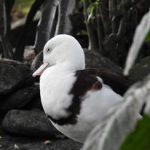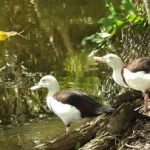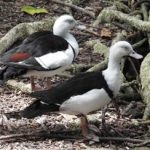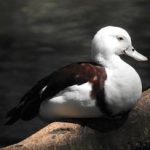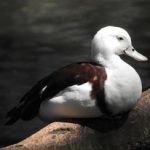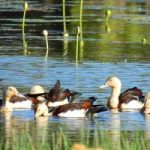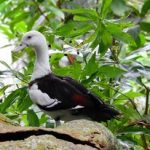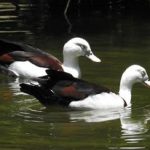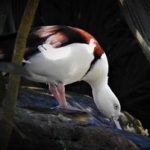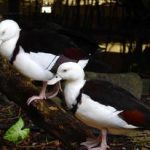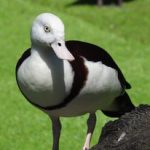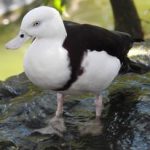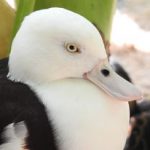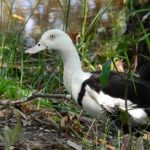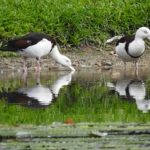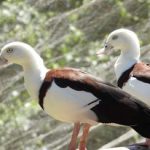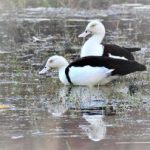RADJAR SHELDUCK
The Radjah Shelduck is a species of shelduck that is native to Australia, as well as parts of Indonesia and Papua New Guinea.
In Australia, the Radjah Shelduck is commonly found in various wetland habitats, including freshwater lakes, rivers, swamps, and estuaries.
These ducks are known for their distinctive appearance. The males have a distinctive white eye, head & underbelly with a dark, chestnut-brown breast-band and upperbody. The female is duller in colour and lacks the breast-band, while both sexes have a pale, flesh coloured bill with pink legs.
Unlike most ducks, Radjah Shelducks are known for their unique nesting habits. such as perching in trees . They often use tree hollows as nesting sites, which is a behavior more commonly associated with cavity-nesting birds. This adaptation helps protect their eggs and young from potential predators.
While many ducks are known for their distinctive quacking sound, Radjah Shelducks are relatively quiet. They communicate using soft whistles and hissing sounds.
Radjah Shelducks typically form monogamous pairs, and they are known to maintain strong pair bonds. They often stay close to each other, even outside of the breeding season.
During the breeding season, male Radjah Shelducks can be territorial and may vigorously defend their nesting sites and feeding areas from other males.
These ducks primarily feed on a variety of aquatic plants, small invertebrates, and insects. Their diet can vary depending on the availability of food in their habitat.
While some populations of Radjah Shelducks are considered sedentary (non-migratory), others may engage in seasonal movements and dispersal within their range.
In some Indigenous Australian cultures, the Radjah Shelduck has cultural significance and is represented in traditional stories and art.
Radjah Shelducks have been known to hybridize with other duck species, such as the Australian Shelduck (Tadorna tadornoides), leading to interesting variations in plumage and characteristics.

